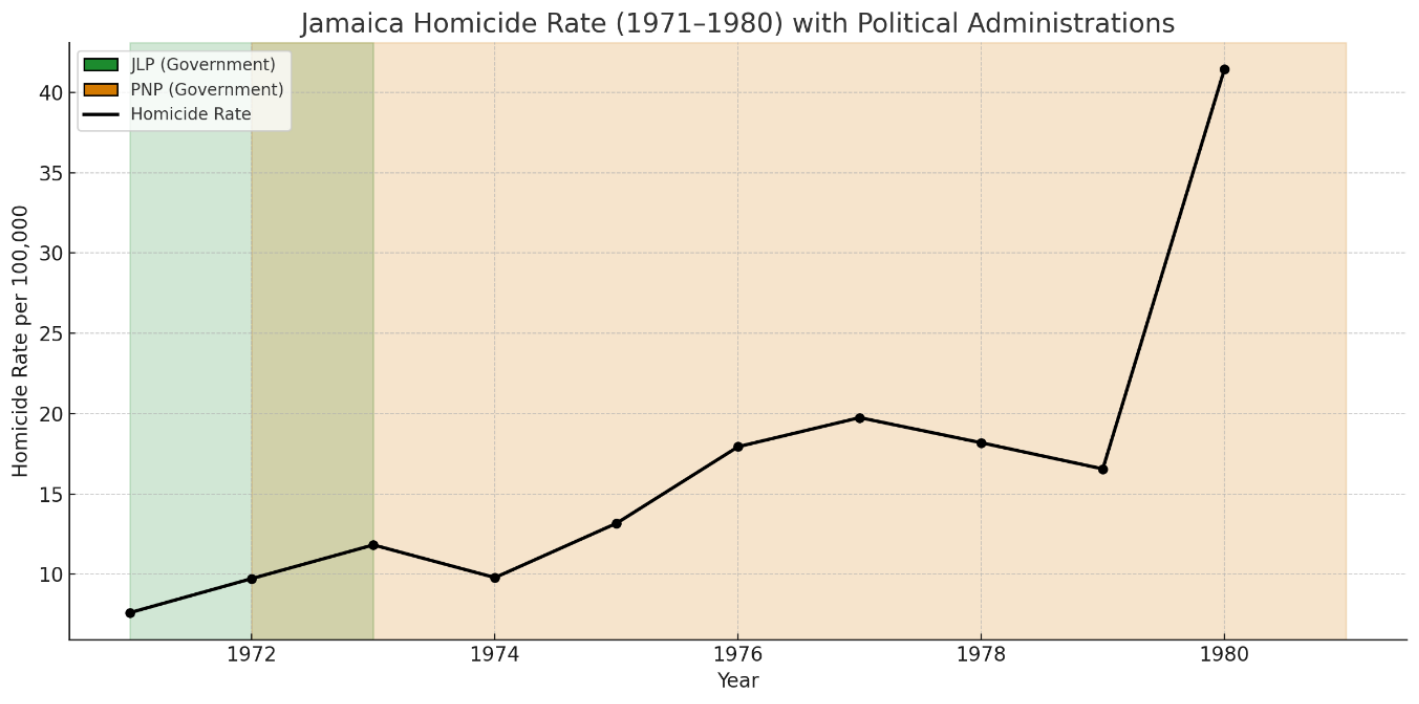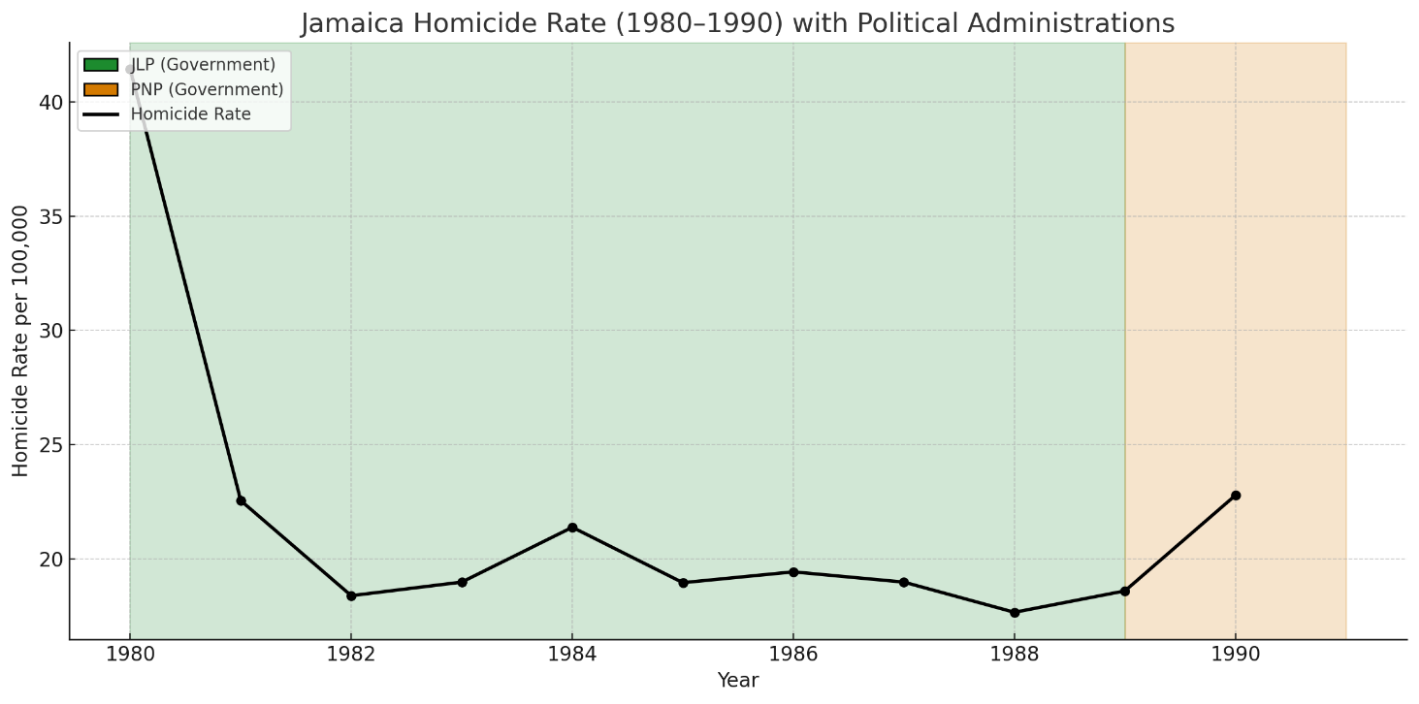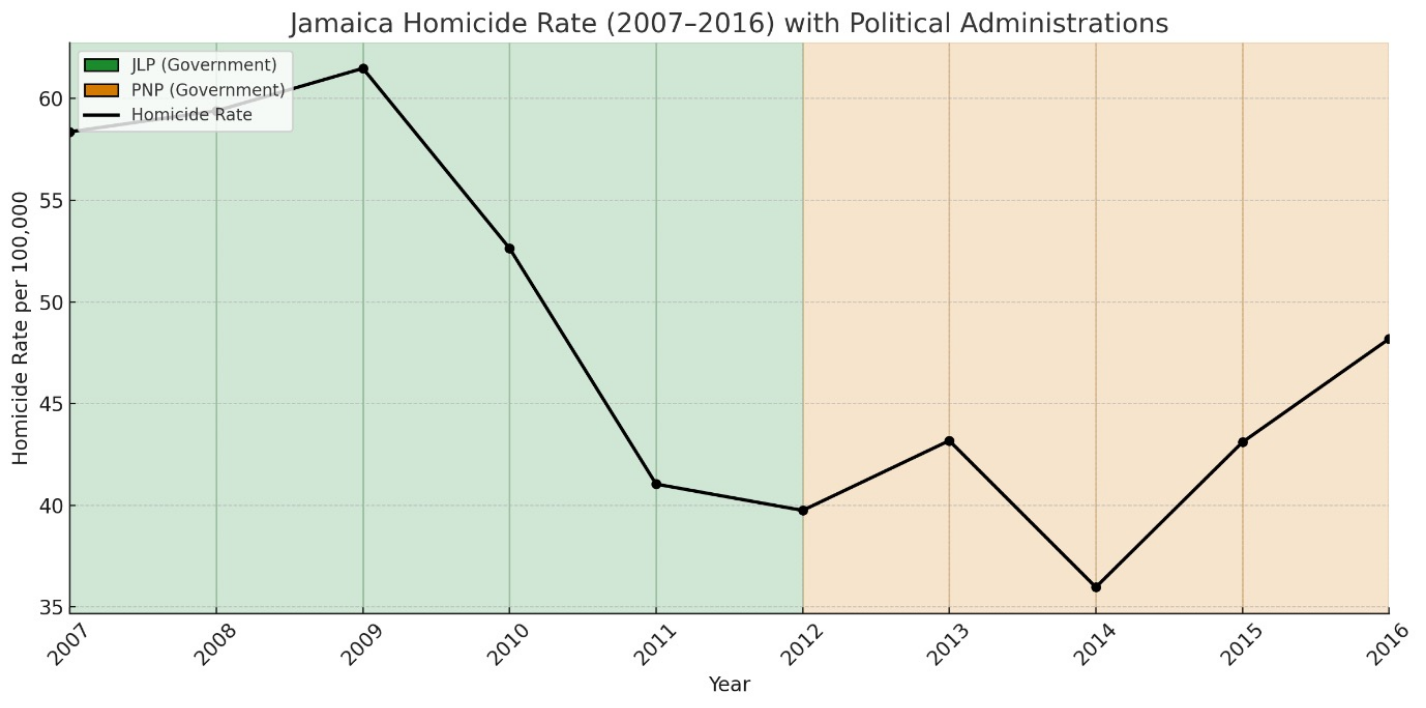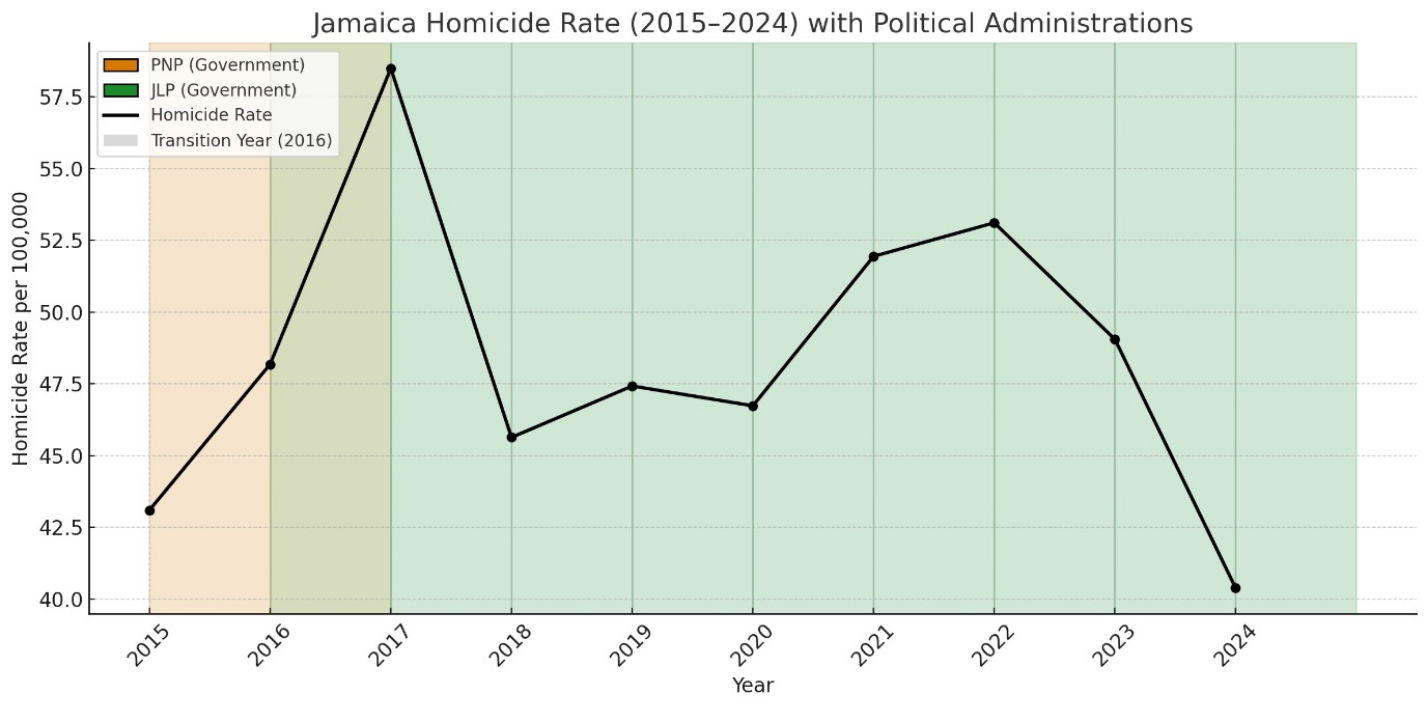Narrative political history
Since Independence in 1962, Jamaica’s development story has been one of promise, setbacks, and recoveries shaped by the divergent governing strategies of the Jamaica Labour Party (JLP) and the People’s National Party (PNP). A close examination of the record from the 1960s to the present reveals a clear contrast in how the country has been governed. JLP has consistently made the difficult but necessary decisions to promote economic and social well-being, while the PNP has repeatedly pursued ideological experiments that destabilised the economy, fuelled violence, and left deep scars the nation is still working to heal.
The 1970s: Democratic Socialism and National Decline
The decade after Independence was Jamaica’s golden age of growth under JLP governance. But that momentum collapsed in the 1970s under Michael Manley’s PNP administration. While global oil shocks and a global recession played a role, it was the PNP’s embrace of democratic socialism—marked by aggressive state intervention, capital controls, and public spending—that generated a full-blown crisis. Investment fled, skilled Jamaicans migrated, and GDP contracted by a staggering 20% between 1974 and 1980. It took Jamaica 17 years—until 1990—just to regain the level of output it had in 1973.
Unemployment surged from ~23% in 1972 to 30.8% by 1979, the highest in the country’s history. Jamaica’s poverty rate rose sharply throughout the 1970s, with one-third of the population falling below the poverty line by the end of the decade.

The 1980s: Stabilisation under the JLP
When the JLP, led by Edward Seaga, returned to power in 1980, they inherited an economy and a society in freefall. The Seaga administration launched a programme of structural reform: slashing unsustainable public spending, liberalising trade, and privatising state enterprises. By the mid-1980s they began to bear fruit. Foreign investment increased, the industry boomed, and even with the setback from Hurricane Gilbert in 1988 recovery efforts in the construction sector helped spur growth.
Under the JLP, unemployment fell dramatically—from 27% in 1980 to 15.2% by 1989—as private sector job creation took hold. Meanwhile, the murder rate was stabilised. The Seaga administration contained the political violence and stemmed the rise in killings that had defined the 1970s.

1989–2007: PNP’s Financial Catastrophe and Rising Crime
Jamaica’s next major setback came in the 1990s, again under the PNP. In 1991, the government prematurely liberalised the foreign exchange market without sufficient reserves, triggering a collapse in the Jamaican dollar. Inflation soared to 80%, and interest rates were pushed sky-high to defend the currency. The result was a credit squeeze that decimated productive enterprises. Over 40,000 businesses went under. Entire sectors—especially manufacturing—were wiped out.
This crisis culminated in the infamous FINSAC bailout, which consumed 42% of GDP—five times the scale of the U.S. bailout during the 2008 global financial crisis. Public debt exploded, interest payments consumed 70% of tax revenue, and government investment in health, education, and infrastructure dried up.
Violence escalated in parallel. During the PNP’s uninterrupted 18½-year rule from 1989 to 2007, Jamaica’s murder rate soared to over 64 per 100,000—making it one of the most violent countries in the world. The combination of economic hardship, weak state legitimacy, and underfunded policing provided fertile ground for gangs to expand. The PNP presided not only over economic collapse but also the rise of entrenched organised crime.

2007–2011: JLP Restores Credibility and Confronts Crime
When the JLP returned to power in 2007 under Bruce Golding, the country was once again on the brink of collapse. The government moved quickly to stabilise public finances. The Jamaica Debt Exchange (JDX), led by Audley Shaw, successfully lowered interest costs and extended debt maturities. The JLP introduced the Fiscal Responsibility Framework (FRF), laid the foundation for Jamaica’s modern fiscal rules, and divested loss-making state-owned enterprises.
On security, the JLP adopted a more strategic approach. The 2010 Tivoli Gardens incursion, though controversial, marked a turning point in the state’s willingness to confront criminal strongholds. That year saw the beginning of a sustained decline. By 2012, murders had dropped below 40 per 100,000—a significant and hard-won reduction.
2012–2016: PNP Stalls Security Gains, Poverty Spikes
The PNP returned to power in 2012, facing a debt crisis of their own making. Finance Minister Peter Phillips negotiated an IMF programme that imposed tough austerity. The result: unemployment peaked at 15.3% in 2013, and poverty soared to 24.6% - a 20-year high.

Meanwhile, the PNP allowed crime to fester. After inheriting a downward murder trend, they changed police leadership and shifted away from targeted operations. Their “Unite for Change” strategy lacked focus and failed to contain violence. By 2016, Jamaica had over 350 gangs—nearly double the number in 2010—and murder rates were climbing again.
2016–2025: JLP Delivers Record Gains
Since 2016, the JLP under Andrew Holness has delivered Jamaica’s most sustained and impressive performance in both economic and security indicators. Unemployment fell from 13% in 2016 to 3.3% as of July 2025—a record low. Despite the COVID-19 pandemic, the economy rebounded quickly. Poverty, which was at 17.1% in 2016, fell to near 11% by 2019, and after a brief spike during the pandemic, declined again to 12.6% in 2022, and now, in 2025, stands at the lowest level in our history— 8.2%.

On security, the JLP launched the Zones of Special Operations (ZOSOs), modernised the police force, and invested in surveillance, intelligence, and legislative reforms. While regional violence continues to rise, Jamaica’s murder rate is declining rapidly under this new model, with a renewed focus on institutional resilience, justice reform, targeted anti-gang operations, and public trust.
Lessons for the Future
Jamaica has spent 38 of its 62 years since Independence recovering from crises, and 24 of those years can be directly attributed to PNP mismanagement in the 1970s and 1990s. The pattern is clear: each time the PNP has pursued ideological or reckless economic policies, the result has been disaster. Each time the JLP has returned to office, it has had to clean up the mess with disciplined, strategic measures.
The JLP’s record stands as proof that serious, responsible governance works. It is a record of stability, reform, growth, and a commitment to national interest over political convenience. By contrast, the PNP’s legacy is one of reckless gambles and long-term damage.
The future must be built on resilience and stability. Jamaica cannot afford another experiment in economic or security mismanagement. The JLP has shown that with the right leadership, Jamaica can thrive.

